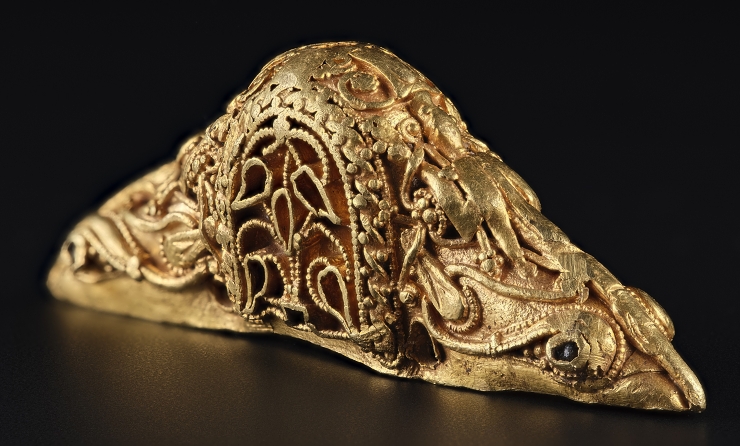
Detectorist finds unique golden sword head from the 8th century
Categories: Nálezy nejenom s detektorem ve Velké Británii a Irsku
An extremely rare, 1,300-year-old gold head decorated with intricate patterns and garnets was found by a hobby prospector with a metal detector. It has now been acquired by the National Museums of Scotland. It is the first and only one of its kind ever found in Scotland. It's worth up to a million crowns.
The head was made around 700 AD. It is made of solid gold, decorated with intricate gold filigree, geometric patterns and stylised zoomorphic scenes. Garnets are artfully set into the gold. Gold works of any quality from this period are very rare in the United Kingdom; this object is coiledc so rich and skilfully crafted that it is quite unique in the Scottish archaeological record.
The rare artefact, measuring 5.5cm in length and weighing 25 grams, was found by a local detectorist near Blair Drummond in Stirlingshire, Scotland in late 2019. He immediately reported the find to the Treasure Trove unit, but the usual process of treasure assessment was disrupted by pandemic. Therefore, the gold head has only now been presented to the public. It has been officially claimed by the Crown and allocated to National Museums Scotland, and has been valued at £30,000 - or about £850,000.
"Early medieval Scotland is a really interesting period," said Dr Alice Blackwell, chief curator of medieval archaeology and history at National Museums Scotland. "There are a number of culturally distinct kingdoms, the design of the pommel is taken from different cultures that brought them together," adding that the blending of different cultural influences is known as the "island art" style made famous by the likes of Illuminated manuscripts such as the Lindisfarne Gospel (an early 8th century manuscript of the Gospel combining Mediterranean, Anglo-Saxon and Celtic elements).
According to experts, it is this blending of styles that makes it difficult to find out exactly where the golden sword pommel was made and who owned it. However, as it was made with a high degree of precision and quality compared to other gold products of the period, it could potentially have belonged to a member of the royal family.
Roman Nemec
Sources: bbc.com, thehistoryblog.com




The article is included in categories:



